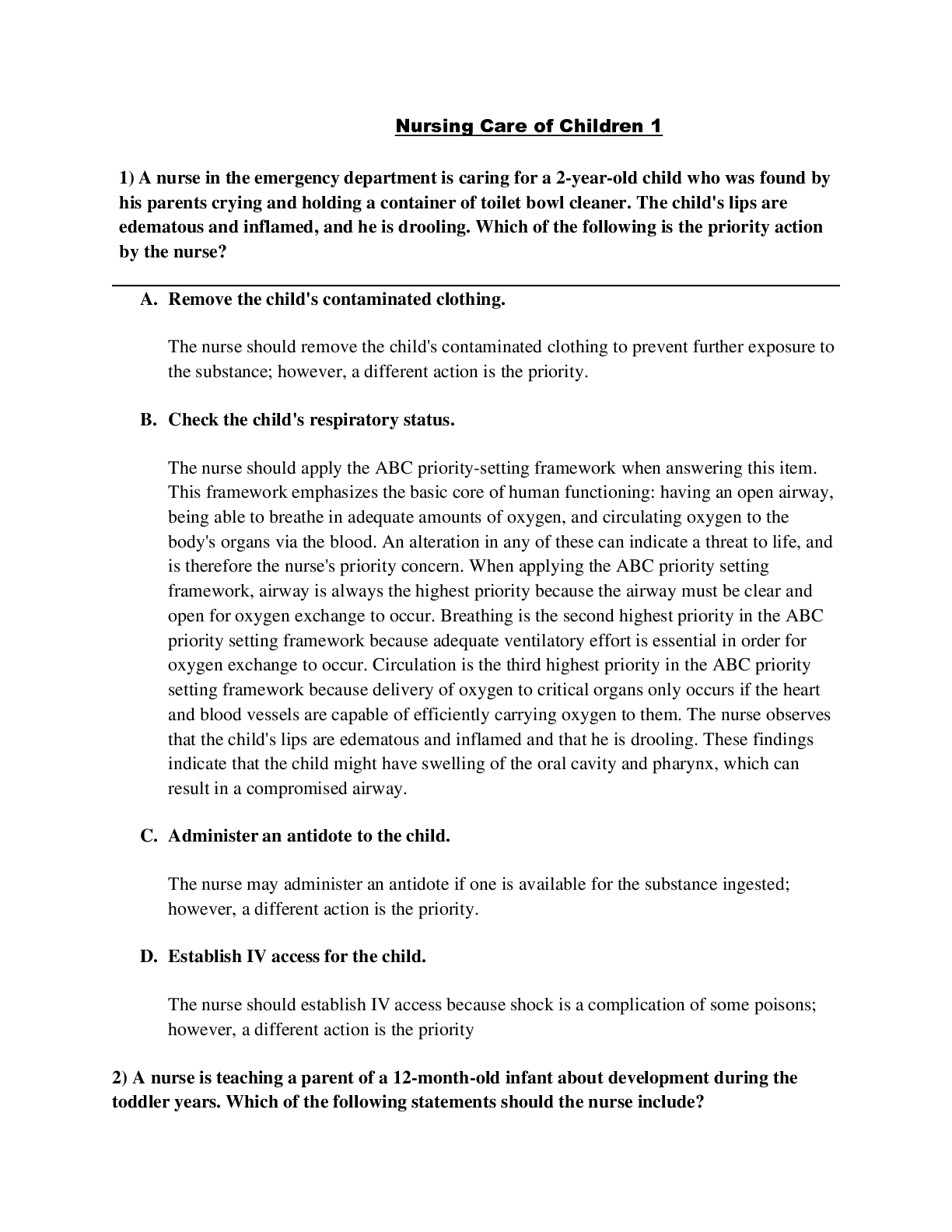*NURSING > QUESTIONS and ANSWERS > ATI: RN Nursing Care of Children Proctored Exam (All)
ATI: RN Nursing Care of Children Proctored Exam
Document Content and Description Below
Peds Proctored Exam N 355 Pediatrics 7 August 2019 ATI: RN Nursing Care of Children 2016 Score: 55% Level 1 4 Detailed Critical Points 1. I read RM NCC RN chapter 3 to better understand hom... e safety for children. a. When educating parents about activities that will enable their children to grow and develop, it is essential that the nurse stress the importance of safety. When the baby is placed on the floor, the area must be free of small objects, electrical cords, and other hazards that could injure the infant. In the same way, objects given to the child for small development must not pose a choking threat. i. Small objects that can become lodged in the throat (grapes, coins, candy) should be avoided. ii. Check clothing for any safety hazards. Sharp objects should be kept out of reach. Anchor heavy objects and furniture so they cannot be overturned on top of the infant. b. Parents should be encouraged to learn emergency action skills for choking, infant and child CPR, and first aid. Parents will become guilt ridden if they are unable to help their children during a life-threatening emergency. c. Children should never be left unattended in a care, even for a few minutes. They may be abducted or may be locked in the car by mistake. Children left in a car may die from overheating or freezing. d. Babies require constant supervision when lying on elevated surfaces and when in such apparatuses as strollers and high chairs. Gates should be placed at tops and bottoms of all stairs and should be attached to all windows. Infant walkers should never be used. i. Crib mattresses should be kept in the lowest position possible with rails all the way up. 2. I read RM NCC RN chapter 36 to better understand communicable diseases. a. Isolation practices are required when caring for children with many diseases. i. Standard Precautions: at all times, HCPs are expected to perform basic infection control measures that prevent the transmission of infectious organisms between patients and themselves. It is important for hand hygiene to be used frequently. Wearing gloves, gowns, masks, and eye protection and engaging in needle safety are included. ii. Contact isolation prevents transmission of diseases that are communicable by direct contact with the pathogen. The child must be placed in a single-patient room or, only if a private room is not available put the patient in with others who have the same disease. HCPs must wear gown and gloves when providing care to the child. No special ventilation is required. iii. Droplet isolation prevents transmission of diseases that are communicable when contaminated respiratory secretions come in contact with the respiratory tract or mucous membranes. The child must be placed in private room or with ,...............................................................CONTINUED.............................................................. [Show More]
Last updated: 1 year ago
Preview 1 out of 3 pages
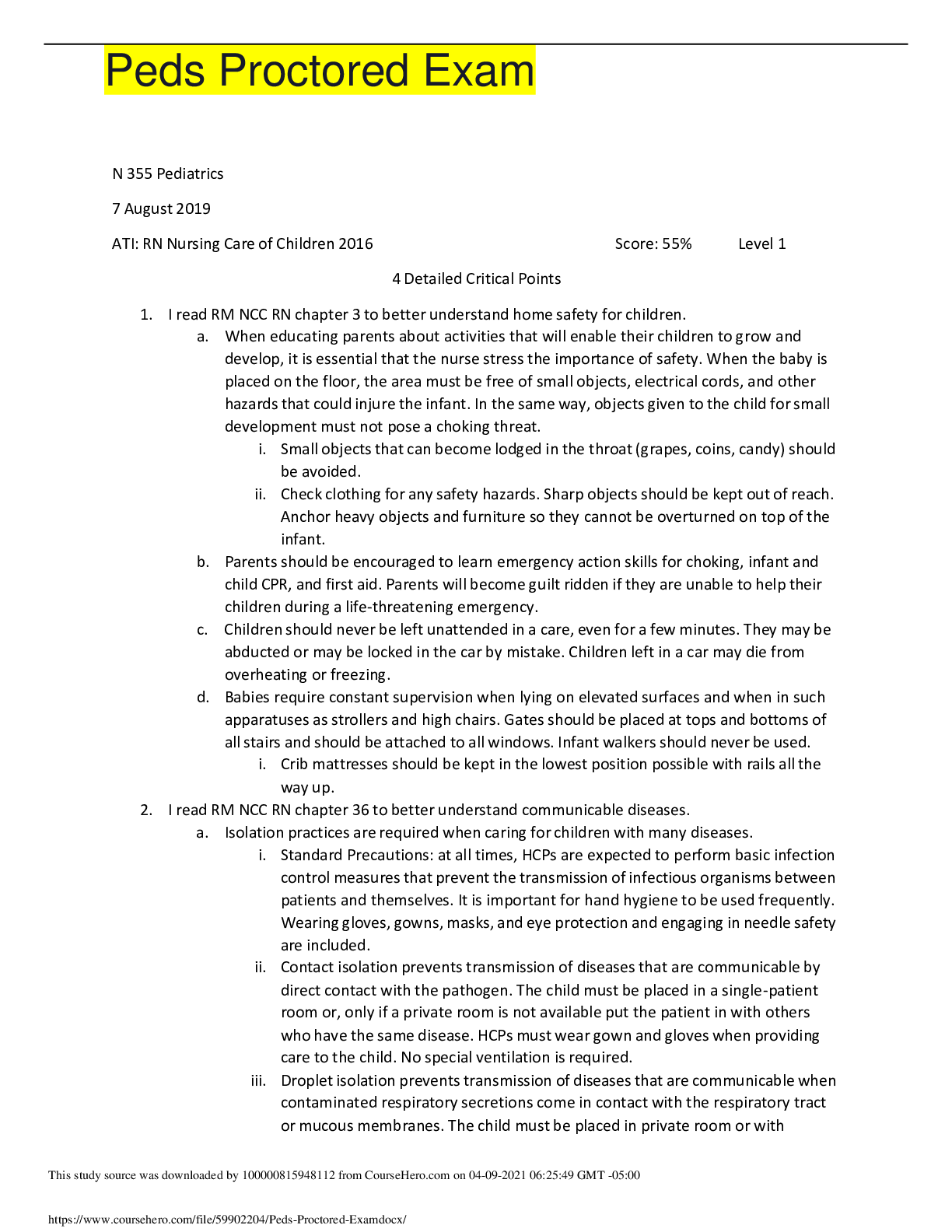
Reviews( 0 )
Document information
Connected school, study & course
About the document
Uploaded On
Apr 09, 2021
Number of pages
3
Written in
Additional information
This document has been written for:
Uploaded
Apr 09, 2021
Downloads
0
Views
102

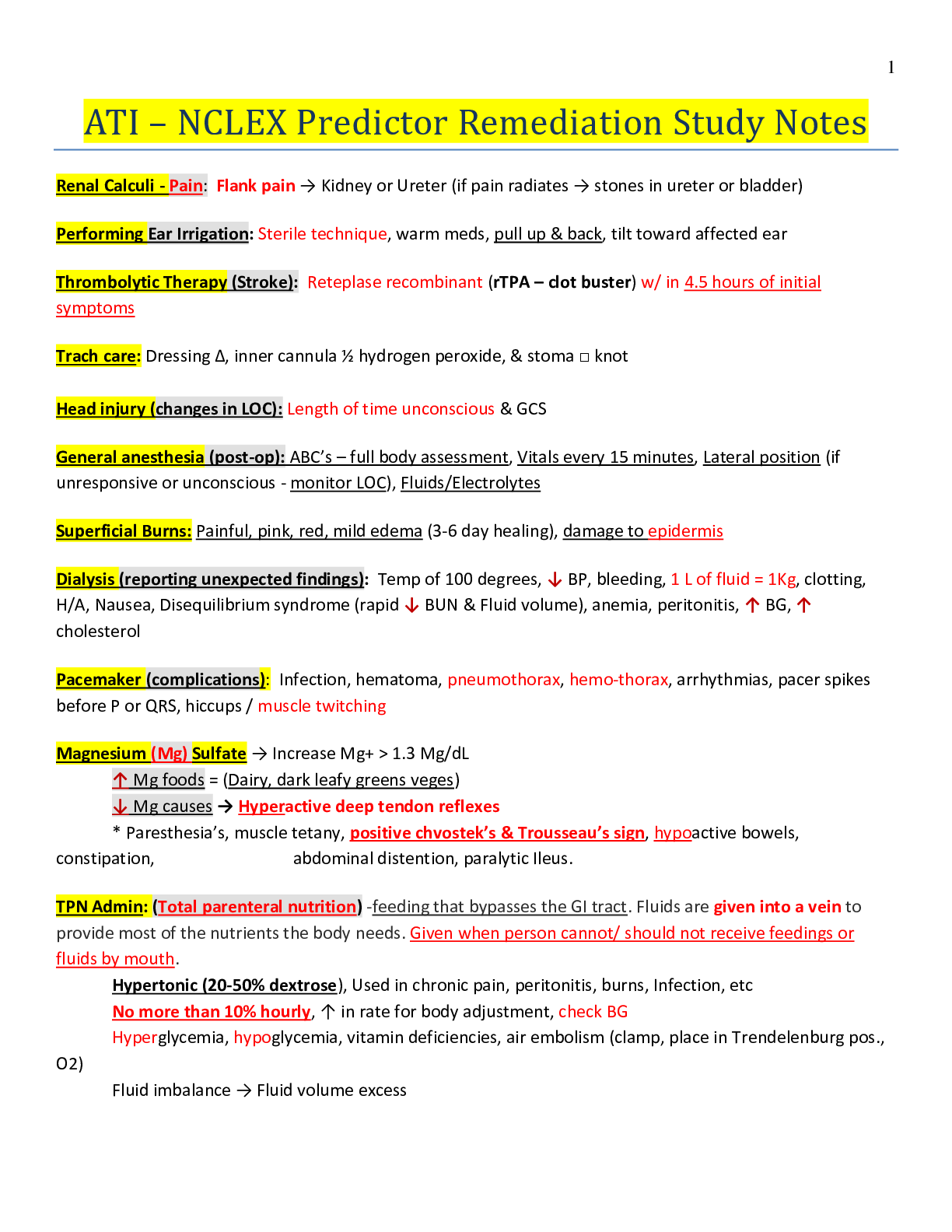


.png)

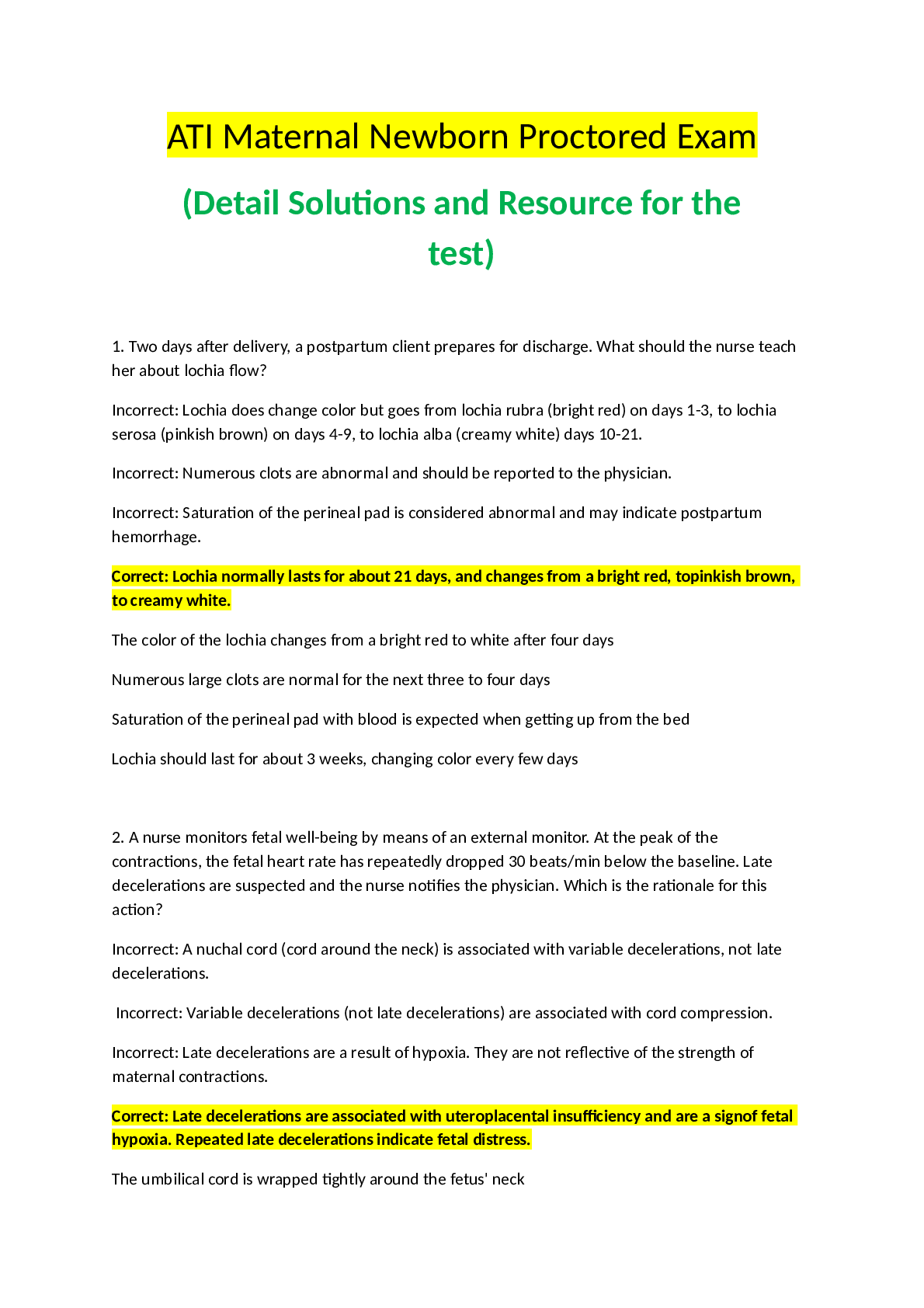
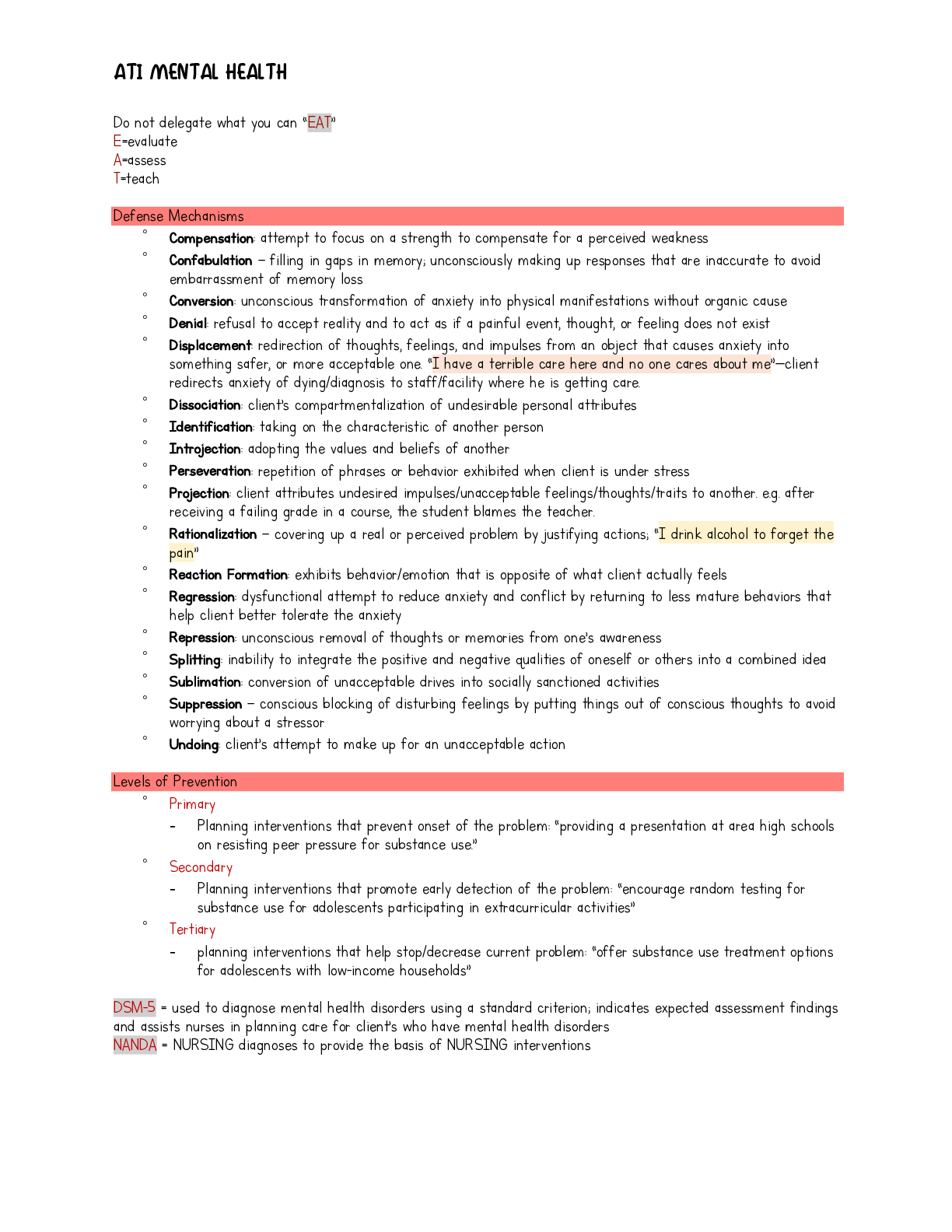
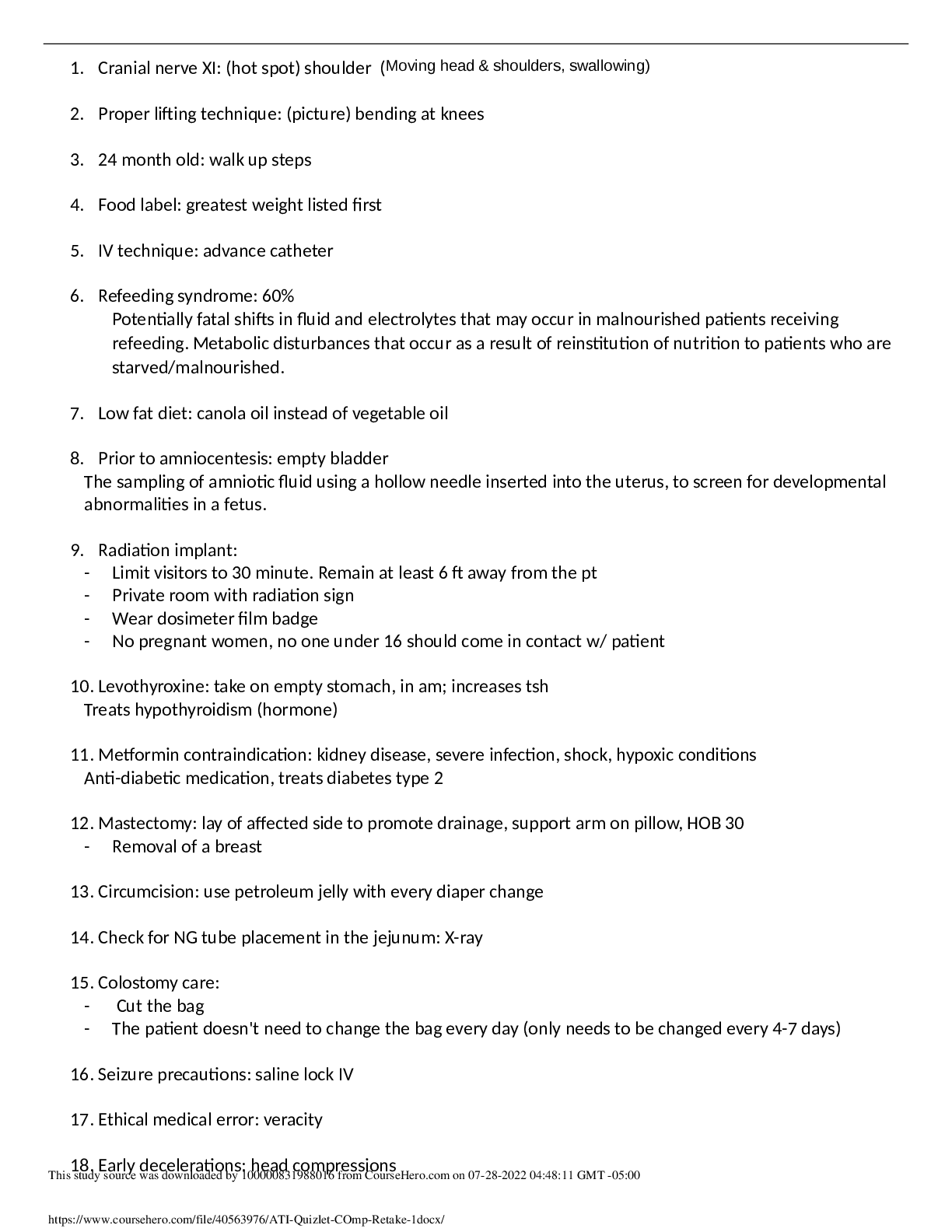



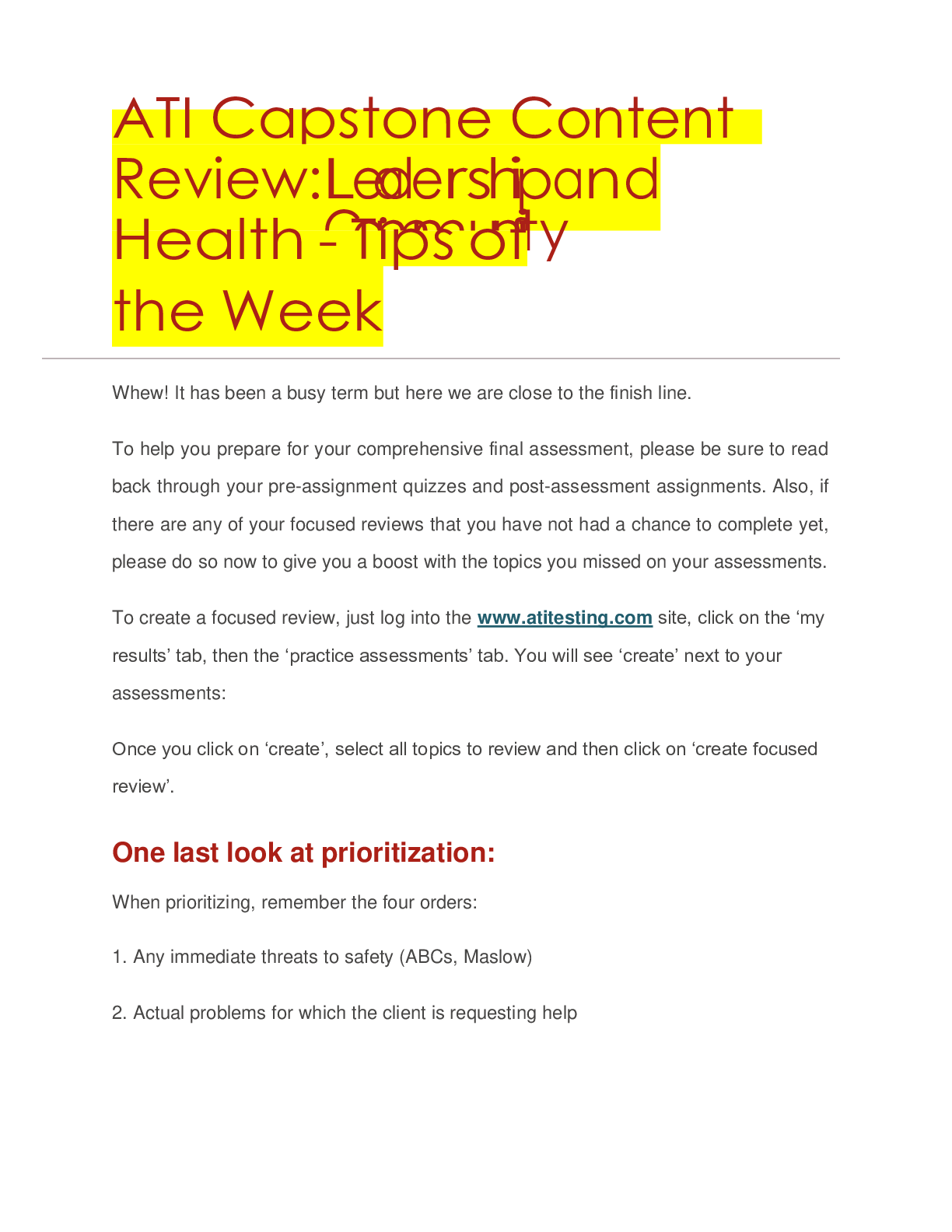
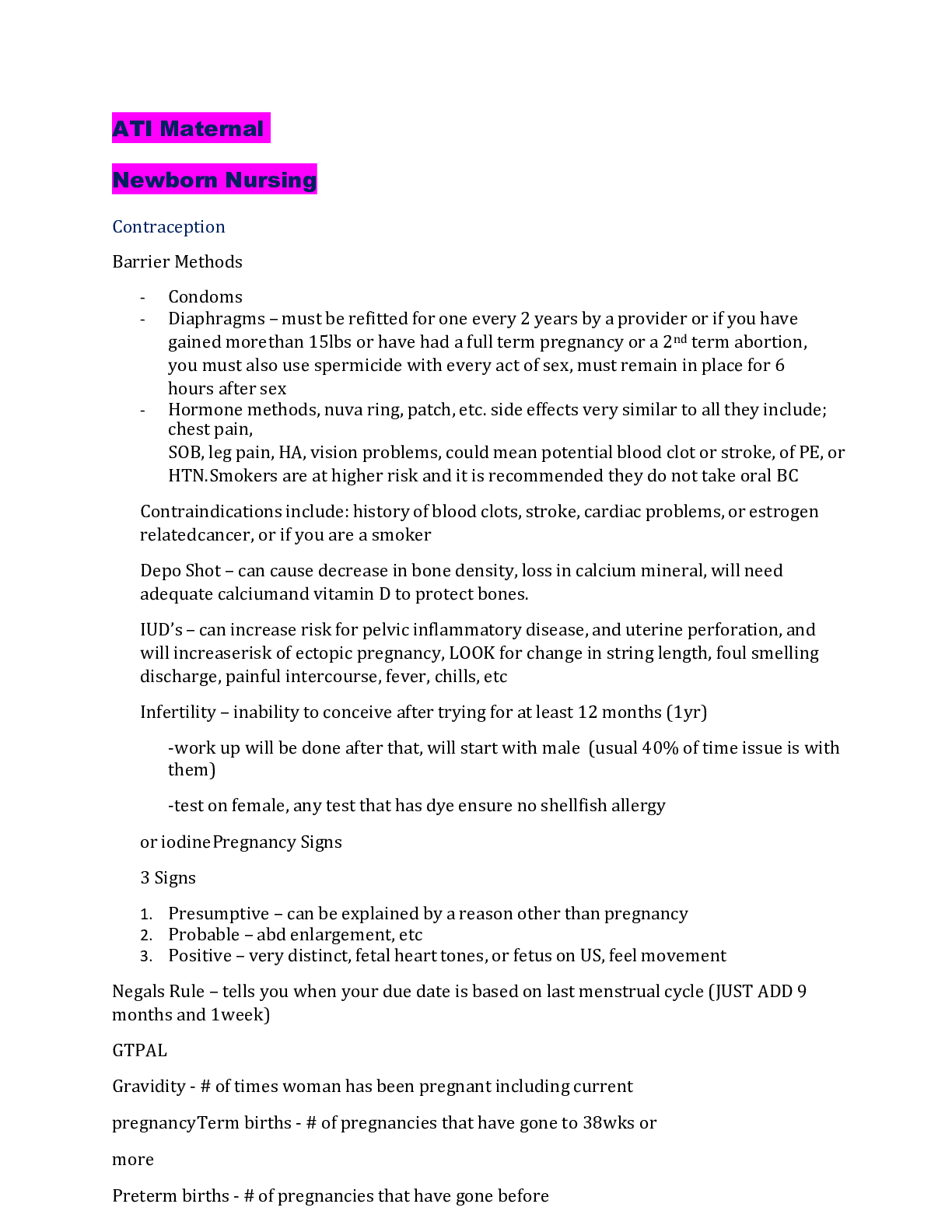



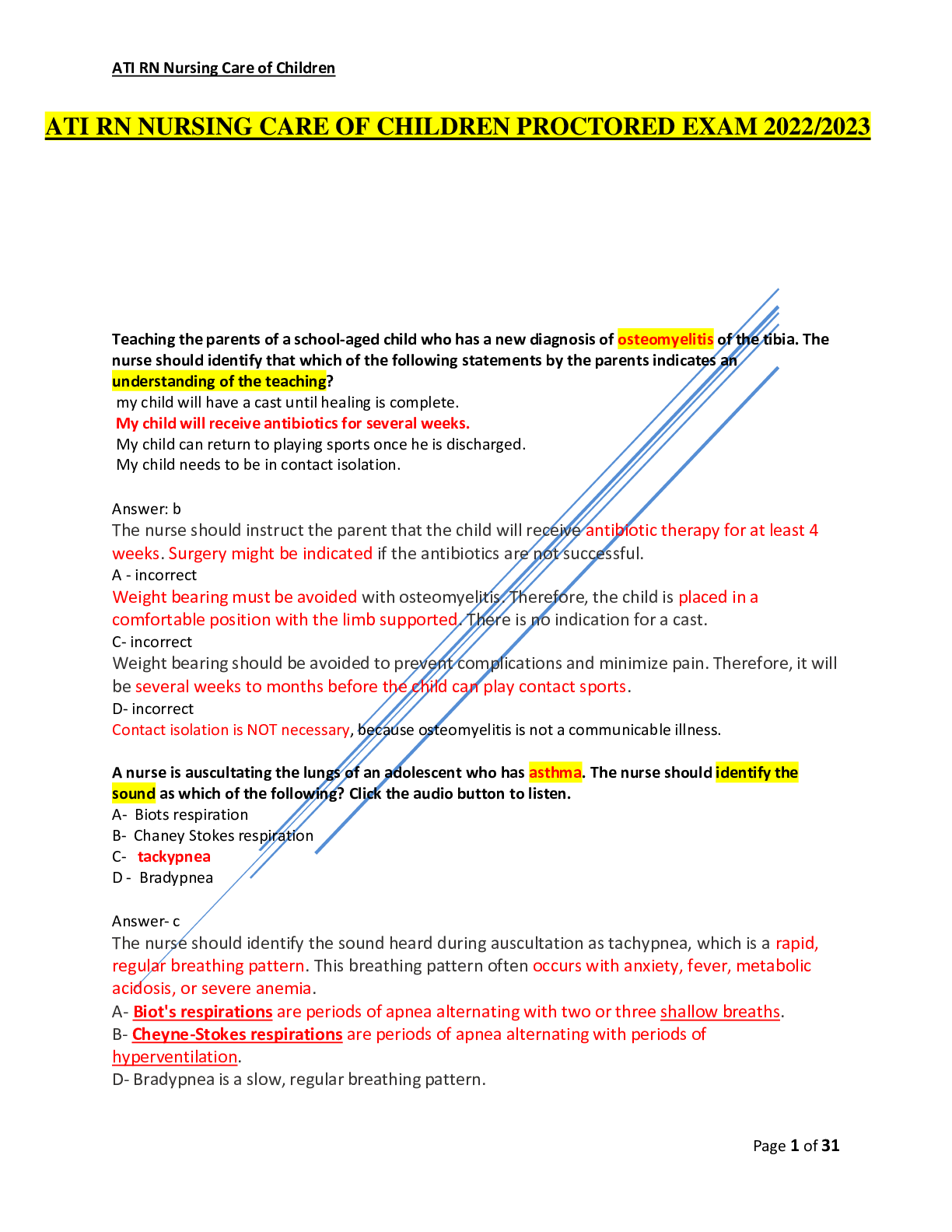
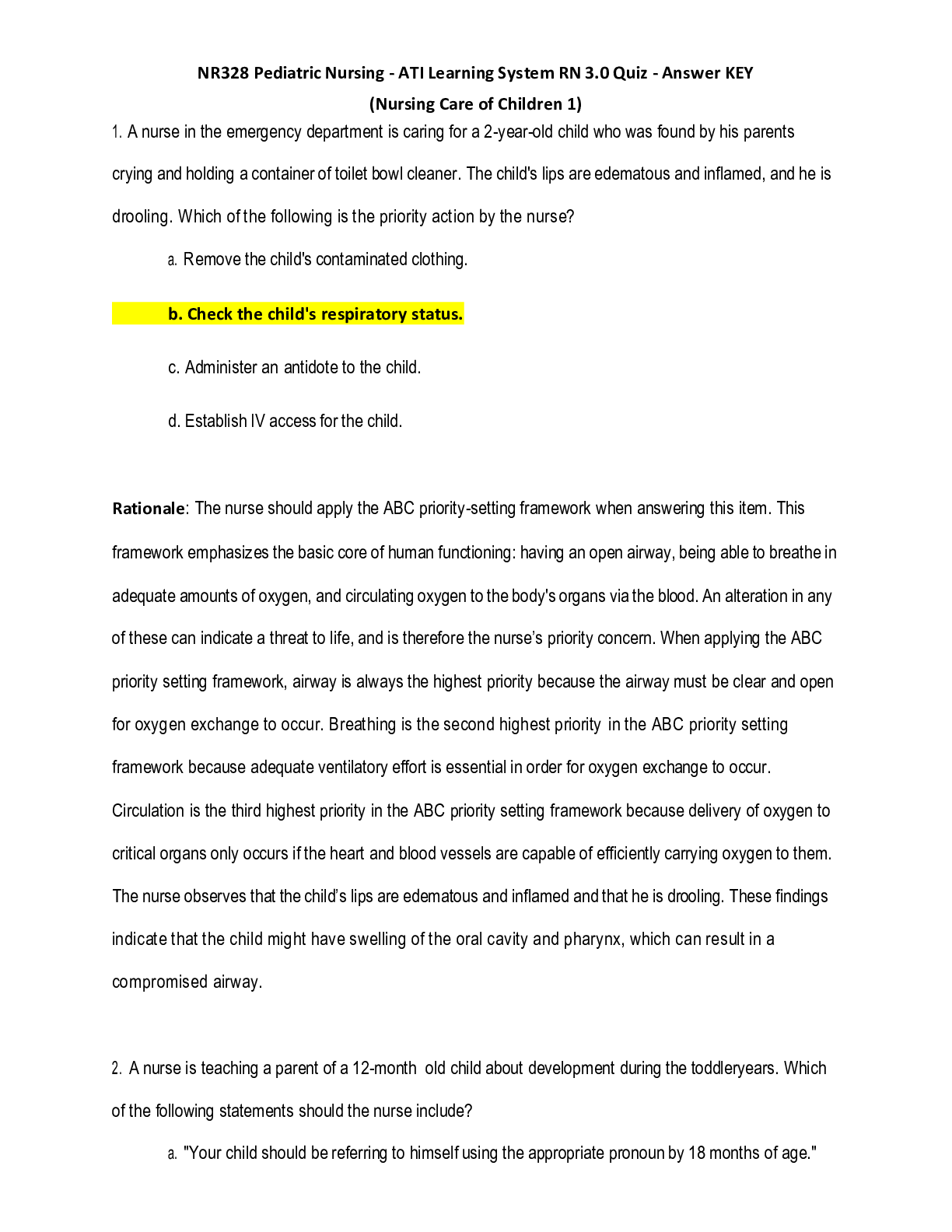

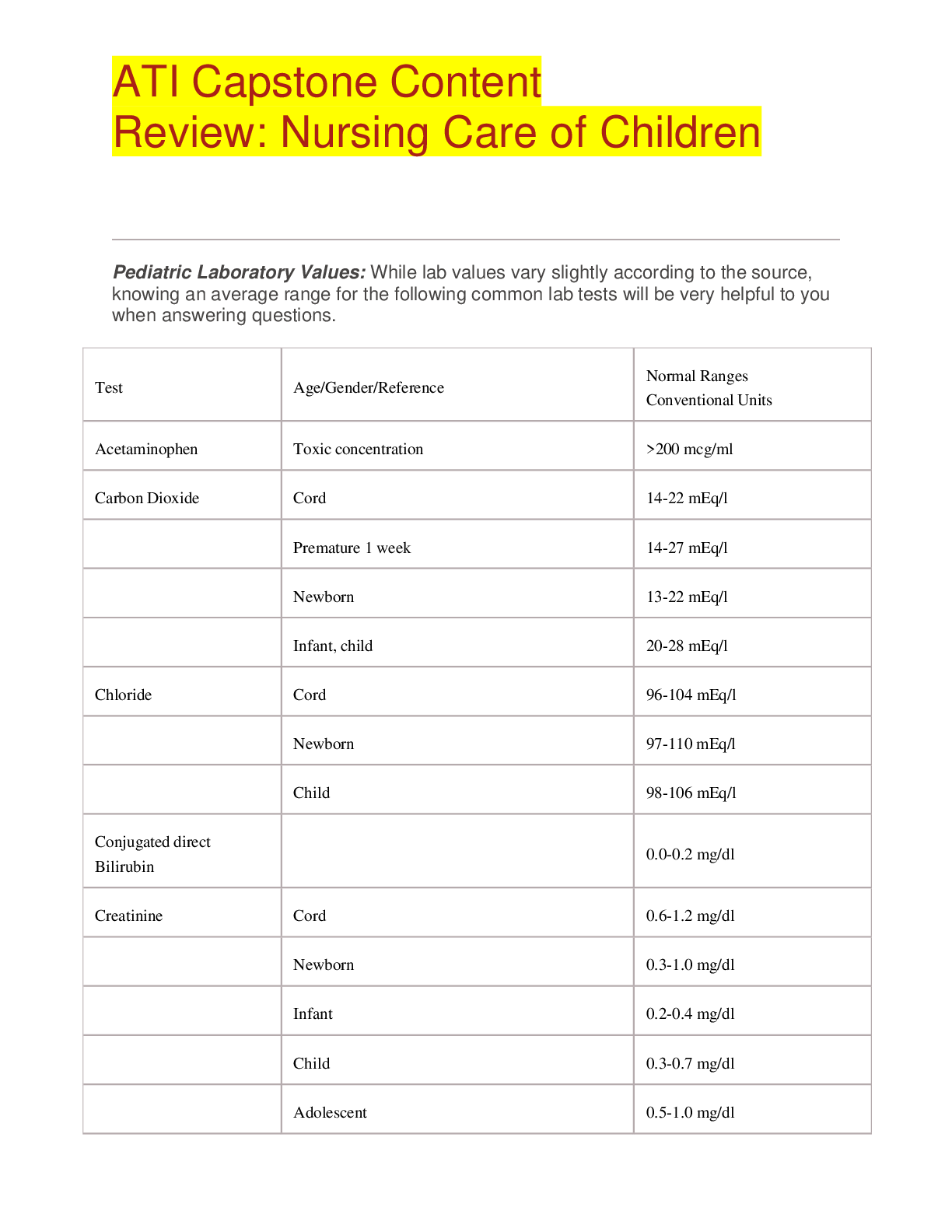
 - Copy (2).png)
 - Copy.png)
.png)
.png)


